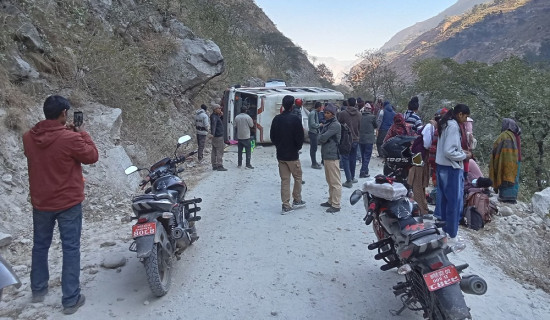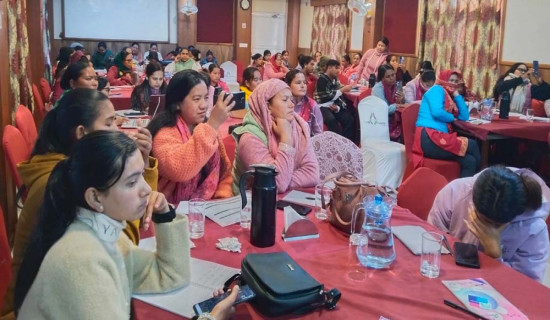- Thursday, 25 December 2025
Growth of deposit collection remains low
By A Staff Reporter Kathmandu, May 13: Growth of deposit collection at the banks and financial institutions (BFIs) has remained low during the first nine months of the current fiscal year 2021/22 compared to the same period a year ago.
Deposit collection by BFIs has increased by 5.1 per cent in the review period compared to an increase of 13.7 per cent in the corresponding period of the previous year, according to a macroeconomic and financial report of Nepal Rastra Bank (NRB).
On y-o-y basis, deposits at BFIs expanded by 12.2 per cent in mid-April 2022.
The share of demand, saving, and fixed deposits in total deposits stands at 8.7 per cent, 28.7 per cent and 56.1 per cent respectively in mid-April 2022.
The share of institutional deposits in total deposit of BFIs stands at 38.6 per cent in mid-April 2022. That figure was 41.7 per cent in mid-April 2021.
Private sector credit from BFIs increased by 13.5 per cent in the review period compared to an increase of 22.5 per cent in the corresponding period of the previous year. On y-o-y basis, credit to the private sector from BFIs increased by 17.8 per cent in mid-April 2022.
In the review period, private sector credit from commercial banks, development banks and finance companies increased by 13.1 per cent, 14.8 per cent and 27.3 per cent respectively.
Out of the total outstanding credit of the BFIs, 66.9 per cent is against the collateral of land and building and 12.3 per cent against the collateral of current assets (such as agricultural and non-agricultural products).
Outstanding loan of BFIs to the agriculture sector increased by 16.9 per cent, industrial production sector by 9.7 per cent, transportation, communication and public sector by 10 per cent, wholesale and retail sector by 16 per cent and service industry sector by 7.8 per cent in the review period.
In the review period, term loan extended by BFIs increased by 17.6 per cent, overdraft by 22.2 per cent, demand and other working capital loan by 17.3 per cent, real estate loan (including residential personal home loan) by 11.9 per cent and hire purchase loan by 4.6 per cent while that of trust receipt (import) loan decreased by 49.9 per cent and margin nature loan by 11 per cent.
During the review period, the NRB mopped up Rs. 60 billion liquidity of which Rs. 28.35 billion was through reverse repo auction and Rs.31.65 billion through deposit collection.
The NRB injected Rs. 6,242.72 billion liquidity of which Rs.413.05 billion was through repo, Rs. 55.92 billion through outright purchase and Rs.5773.75 billion through standing liquidity facility (SLF) during the review period.
In the review period, the NRB injected liquidity of Rs.203.09 billion through the net purchase of USD 1.68 billion from foreign exchange market.
Liquidity of Rs. 324.92 billion was injected through the net purchase of USD 2.75 billion in the corresponding period of the previous year.
The NRB purchased Indian currency (INR) equivalent to Rs. 419.18 billion through the sale of USD 3.50 billion in the review period.



-original-thumb.jpg)













